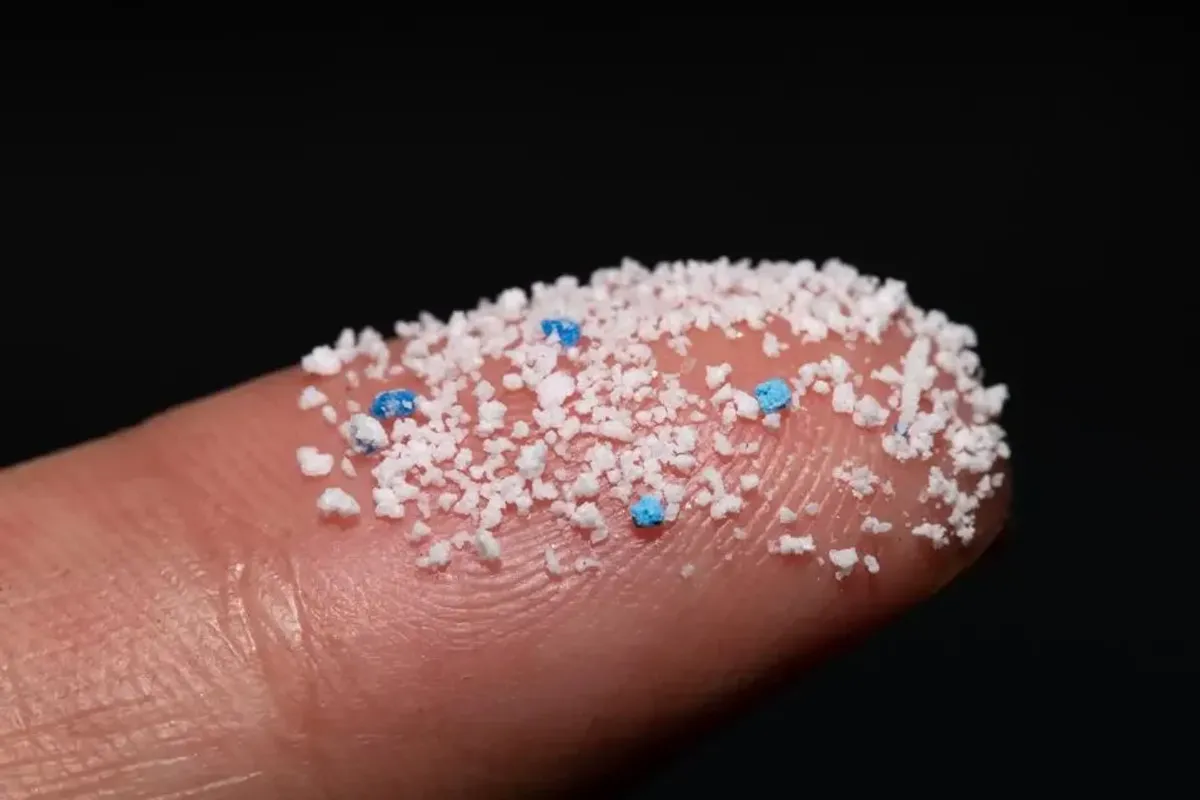Does Silicone Release Microplastics into the Environment?
Wondered in the kitchen with a spatula in hand about whether silicone truly improves upon plastic? Silicone does not release microplastics into the environment

9 min read
Wondered in the kitchen with a spatula in hand about whether silicone truly improves upon plastic?
Silicone does not release microplastics into the environment as traditional plastics do. It is a stable material that doesn’t break down into small particles under normal conditions, making it a safer choice for reducing microplastic pollution.
Silicone appears as a hopeful substitute, examining its greater environmental effect is very important. This article explores silicone’s qualities, ability to decompose naturally and comparison with other materials regarding planet safety.
**Silicone releases microplastics into the environment.**False
Silicone remains steady and typically does not fragment into microplastics in regular circumstances.
On this Page
**
What Is Silicone and How Is It Made?
Silicone is praised for its flexibility and eco-friendly attributes, but what is it exactly and how do specialists produce it?
Silicone is a synthetic polymer derived from silicon, oxygen, carbon, and hydrogen. It is made through a series of chemical processes involving the extraction of silicon from silica, followed by polymerization to form flexible, durable materials used in various applications.
![]() silicone raw material to make silicone kitchenwares
silicone raw material to make silicone kitchenwares
Understanding Silicone: The Basics
Silicone is a synthetic polymer composed of silicon, oxygen, carbon, and hydrogen atoms. Unlike traditional plastics, silicone possesses unique properties that make it a highly versatile material across multiple industries. It is known for its flexibility, heat resistance, and durability.
How Silicone Is Manufactured
The production of silicone begins with silica (silicon dioxide), which is derived from sand. The process can be broken down into several stages:
Extraction of Silicon:
Silicon is extracted from silica through a reduction process using carbon at high temperatures.
This yields silicon metal, which is the primary raw material for silicone production.
Synthesis of Chlorosilanes:
The silicon metal is then reacted with methyl chloride in the presence of copper as a catalyst.
This reaction produces chlorosilanes, which are vital intermediates in the production of silicone.
Hydrolysis and Condensation:
The chlorosilanes undergo hydrolysis and condensation to produce siloxane polymers.
These polymers are then further processed to form different types of silicones.
Types of Silicone Products
Silicone can be manufactured into various forms, such as:
TypeDescriptionElastomersUsed in seals, gaskets, and flexible moldsFluidsFound in lubricants and polishesResinsUsed in coatings and adhesivesGelsCommonly used in medical devices and implants
Each type of silicone product is tailored for specific applications, making silicone an integral material in industries ranging from healthcare to construction.
Environmental Considerations
While silicone is a more stable option compared to traditional plastics, it’s important to assess the full environmental impact of its production. The energy-intensive processes and the use of certain chemicals pose challenges. However, ongoing research aims to improve these processes to enhance sustainability.
**Silicone is derived from silicon, oxygen, carbon, and hydrogen.**True
Silicone consists of four different elements. It is a man-made compound.
**Silicone production starts with extracting silicon from sand.**True
Silicon comes from silica, which is in sand, for silicone creation.
How Does Silicone Compare to Traditional Plastics?
Learn how silicone compares to traditional plastics in lasting strength, safety and effects on the environment.
Silicone offers distinct advantages over traditional plastics, including higher heat resistance, longer durability, and lower potential for environmental harm. Unlike plastics, silicone does not leach harmful chemicals or degrade into microplastics, making it a preferable option for eco-conscious consumers.
![]() siliocne vs plastic
siliocne vs plastic
Heat Resistance and Strength
Silicone’s special chemical build offers very good resistance to heat compared to most common plastics. It tolerates temperatures from -60°C to 230°C without breaking. This quality makes silicone perfect for kitchen tools and machines where high heat is normal.
On the other hand, many regular plastics, like polypropylene and polyethylene, melt at lower temperatures. In very hot situations, these materials may twist or weaken, shortening their usage time.
Chemical Stability and Safety
Silicone is stable and doesn’t react with food or drinks. It also doesn’t release harmful substances. Many regular plastics have chemicals like BPA that can leak and become a health risk. This is a worry for food containers or children’s toys.
For those wanting safer options, silicone items provide comfort as they lack these dangerous substances.
Environmental Impact: Comparing Effects
Silicone and regular plastics do not decompose naturally, but silicone does not break into microplastics. These tiny pieces from plastics harm nature significantly.
Table: Comparison of Main Features
PropertySiliconeRegular PlasticsHeat ResistanceVery HighMedium to LowChemical StabilityVery SafeChangesMicroplastic RiskNoneVery HighRecyclabilityLimitedEasily Found
Though silicone doesn’t add microplastics to the world, it’s hard to recycle. Recycling places for silicone are rare compared to regular plastics. Maybe, with new developments, this might get better, making silicone even more appealing for eco-friendly buyers.
Use and Longevity
Silicone’s strong build helps it last longer than many normal plastics. It bends and handles wear well, so silicone goods have a very long life, cutting down waste over time. For example, silicone kitchen tools do not break or lose color like plastic ones after many cleanings.
In situations needing strength and long-term use, silicone materials often perform better than plastic ones. They are great for lasting items like baking tools, baby goods, and even electronic cases.
![]() silicone made products
silicone made products
**Silicone withstands temperatures up to 230°C.**True
Silicone’s chemical form helps it withstand very high heat.
**Traditional plastics are more recyclable than silicone.**True
Recycling centers for regular plastics are more common than those for silicone.
Is Silicone Biodegradable or Recyclable?
Eco-awareness rises. People find it important to know silicone’s effects on nature. Might it break down naturally or enter the recycling cycle?
Silicone is not biodegradable but can be recycled through specialized programs. It resists degradation in landfills, offering durability over disposable plastics, yet recycling opportunities are limited.
![]() silicone recycling facility
silicone recycling facility
Understanding Silicone’s Biodegradability
Silicone is strong and useful but does not rot away naturally. Unlike things from nature that break down, silicone stays whole in the environment. When buried in trash sites, silicone can last for hundreds of years.
Silicone is tough because it has connections of silicon and oxygen. This makes it strong and able to handle high heat and chemicals. These features are good for different uses, but they also mean silicone does not rot.
Recycling Silicone
Sending silicone to recycling is possible but not easy like usual plastics or metals. Unlike single-use plastics with recycling plants everywhere, silicone needs special places to recycle. These special places can turn old silicone products back into raw parts for new use.
Here is a simple table about recycling silicone:
AspectDescriptionRecyclabilityPossible but needs special placesCommon ProductsBaby bottle tops, cooking tools, medical itemsProcessGathered by special programs, often needs sorting by type
The Role of Specialized Programs
In some places, businesses have programs to gather and recycle silicone items. People send back old silicone things for right treatment. These programs help keep silicone out of trash sites.
Some efforts collect silicone kitchenware or baby items and turn them back into raw stuff for new products. The struggle is few such programs exist everywhere.
Silicone is better than usual plastics because it lasts and can be used again, but spreading these recycling programs is important to help the environment.
**Silicone is biodegradable.**False
Silicone never breaks down by itself in nature.
**Silicone recycling requires specialized programs.**True
Specific places are needed to handle and recycle silicone.
What Are the Environmental Benefits of Using Silicone?
Silicone attracts interest as a green option. Why is it good for nature?
Silicone offers environmental benefits such as durability, reduced waste, and non-toxic properties, making it a preferable alternative to traditional plastics.
![]() silicone environmental benefits
silicone environmental benefits
Durability and Longevity
One of the key environmental benefits of using silicone is its exceptional durability. Unlike traditional plastics, which can degrade over time and release microplastics, silicone maintains its integrity for years. This longevity means that products made from silicone need to be replaced less frequently, reducing the overall demand for resources and energy used in production.
Resistance to Extreme Conditions
Silicone’s resistance to extreme temperatures and environmental conditions further enhances its eco-friendliness. It does not melt or warp under high heat, nor does it become brittle in freezing temperatures. This resilience makes silicone ideal for a wide range of applications, from kitchenware to automotive parts, reducing the need for multiple materials and thereby minimizing waste.
Chemical Stability and Safety
Another significant benefit is silicone’s chemical stability. It does not leach harmful chemicals into food or beverages, unlike some plastics. This makes it a safer option for food storage and medical applications, ensuring that no toxic substances enter the environment or human bodies through its use.
FeatureSiliconeTraditional PlasticsLongevityHighLowTemperature ResistanceExcellentPoorChemical StabilityVery StableUnstable at times
Recyclability and End-of-Life Considerations
While silicone is not biodegradable, it can be recycled through specialized processes. This aspect is crucial for managing its environmental footprint once its lifecycle ends. Explore recycling options to learn more about how silicone recycling works and its availability in your area.
Reduced Waste Generation
Finally, due to its durability and reusability, silicone helps in reducing the overall waste generation. For example, using silicone bags instead of single-use plastic bags can significantly decrease the amount of waste sent to landfills.
Understanding these benefits helps consumers make informed choices about materials they use daily, contributing to a more sustainable future.
**Silicone is biodegradable.**False
Silicone does not break down naturally but recycles with specific methods.
**Silicone does not release microplastics.**True
Silicone keeps its structure over time, stopping microplastic release.
Conclusion
Silicone provides a useful option instead of traditional plastics. It does not cause microplastic pollution. Think about its whole lifecycle and usage to make smart, green decisions.
About SANNYIN Technology
SANNYIN Technology specializes in custom silicone product manufacturing, offering comprehensive solutions from design to production. With our advanced manufacturing facilities and strict quality control, we deliver high-quality silicone products that meet international standards.
Contact us today to discuss your custom silicone product requirements.
